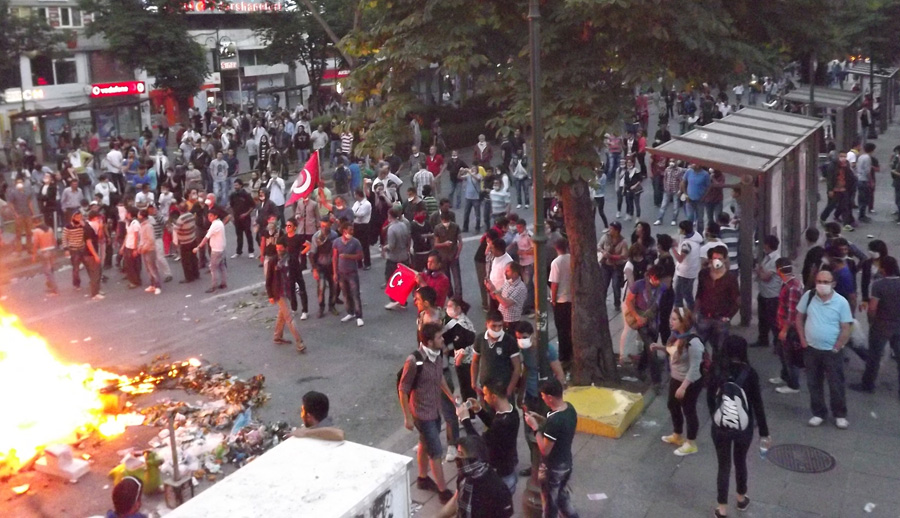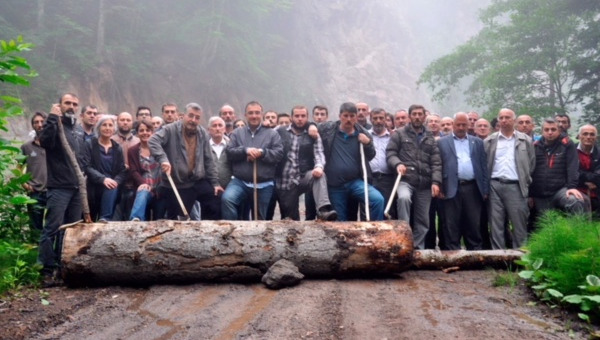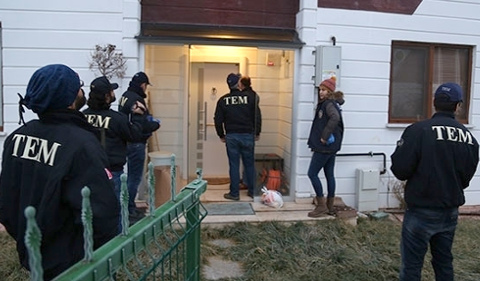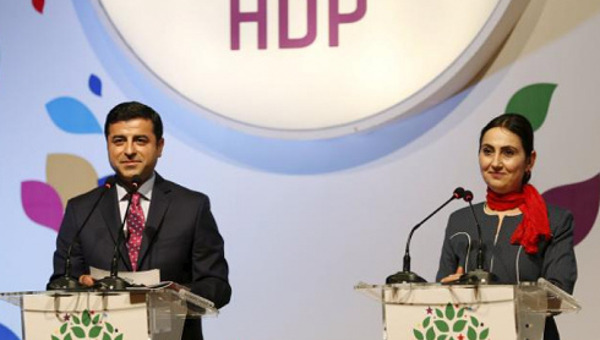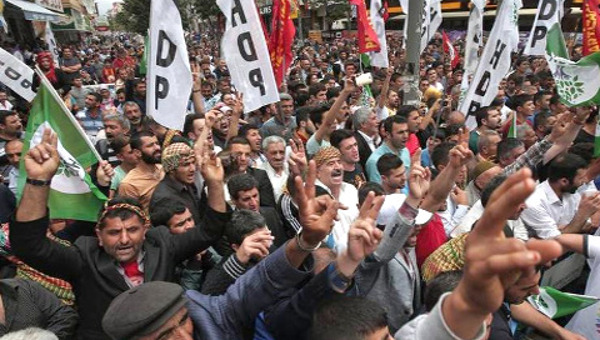On May Day 2013, the police poured tonnes of tear gas on tens of thousands of workers and youth in different quarters of Istanbul, Turkey in order to stop them from approaching Taksim Square. The government had decided that this square, the traditional venue for May Day celebrations and home to daily political actions big and small, was to be shut to demonstrations this year because development work was being done on a massive scale involving huge excavated pits making it dangerous for crowds. In a ludicrous act, the governor of Istanbul stood atop a mound at the edge of one of those pits to hold a press conference in a desperate attempt to drive home the threat that these pits represented for people.
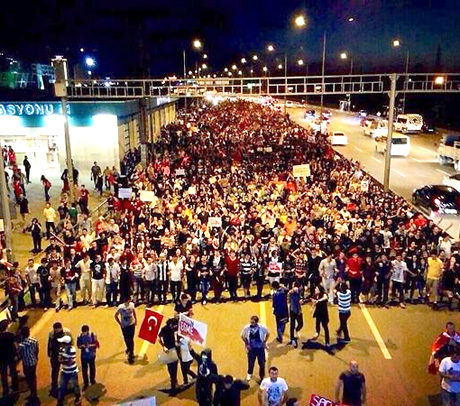
Spontaneity and Heterogeneity
Yes, this is a rebellion, the revolt of a whole people against an oppressive government that has overseen processes of brutal capitalist exploitation over a full decade. But it is not yet a revolution. For the people do want to bring the government down (the major unifying slogan is “Erdogan resign!” or “Government resign!”), but are not organized, nor can they yet become organized so as to set up an alternative government that represents their aspirations and interests. This is not a struggle for power, but a gigantic movement that has taken the whole (or almost the whole, see below) country in its grip that cries out its grievances and wants to remove from the scene what it sees as the cause of all ills, the Erdogan government.
As in almost all the cases of revolutionary or pre-revolutionary outburst around the Mediterranean basin within the last five years (Greece December 2008, Tunisia and Egypt 2010-11, Spain 2011), the revolt in Turkey is also a totally spontaneous one uncontrolled by any single or several political or social organization. This is both a strength and a weakness. It is a strength in the early stages because it brings in the most incredible sections and layers of society without fear of manipulation by a political organization not to their liking. It is definitely a weakness in the long term since if the revolt were to turn into a revolution, this could only triumph under the leadership of one or more political parties with a strong following in the mass movement.
But even in the medium term (and, in this kind of concrete situation, when we talk about the medium term, we are talking weeks, if not days) it is also a weakness since it paradoxically leaves the movement vulnerable to the machinations of wings of the bourgeois political establishment that wish to recuperate the movement through more subtle methods (refused by Erdogan, who has persisted and signed) and this way put an early end to the rebellion before it starts to get out of hand and starts to threaten the bases of capitalist rule in the country. This kind of alternative has already started taking shape in the form of an alliance between Abdullah Gul, the president of the republic (of AKP origin himself), a political figure who is in political rivalry with Erdogan for the next presidential elections, and Kemal Kilicdaroglu, the leader of the CHP, the Turkish member of the misnamed Socialist International. Since Erdogan has departed on a tour of North African countries and since Bulent Arinc, deputy prime minister acting as prime minister temporarily, takes a line that is critical of Erdogan’s stance also, they will probably try to absorb the movement through some minor concessions to the mass movement in coming days, with Erdogan conveniently absent while soft methods alien to him are being implemented. Behind this kind of solution would stand at least TUSIAD, the organization of the pro-Western wing of finance capital, if not other organizations of the Turkish ruling classes. This kind of face saving resolution of the problem is made all the more urgent since even at this stage the capitalist economy is threatened by the situation Turkey finds itself in. On Monday, day four of the revolt but the first day when the Istanbul Stock Exchange was open, the markets took a nose dive, closing more than 10 per cent on a catastrophic day.
On the other hand, the movement itself is extremely heterogeneous both in class terms and in ideological-political orientation. In class composition, one can easily assert that this is a multi-class movement, with the modern sections of the petty-bourgeoisie totally immersed in a Western life style, the intelligentsia, the upper echelons of the proletariat and the youth in the forefront. The working-class proper is not oblivious to the movement, but has not yet either thrown its organized weight behind the movement or put forth its specific class demands.
Ideologically and politically three broad tendencies may be discerned, with infinite variations in each category. There is the ecological sensibility, unfortunately marred by the left liberalism (in the European sense of the term “liberal”) of great parts of the left in Turkey, which makes them easy prey to the machinations of what they would consider as the “democratic” and “civilized” wing of the bourgeoisie. There is, secondly, a very strong, one would even say dominant, Turkish nationalist tendency, ranging from the CHP through myriad Kemalist associations to the ex-Maoist, Kemalist, quasi-fascistic Labour Party. And, of course, there is the motley collection of Turkish socialist and revolutionary forces, skilled and seasoned in street fighting, but lacking in political acumen or programmatic horizon.
The aspirations of the three tendencies are very different from each other. For the ecological cum left liberal tendency, the great dream is Turkey’s accession to the European Union. So any deal that makes TUSIAD happy would possibly leave them satisfied as well. The nationalist tendency is divided between Atlanticism and a pro-EU stance, on the one hand, and a Eurasian orientation, on the other. However, both of these sub-currents are united against the creeping Islamization that the AKP has been carrying out successfully over a decade. They are all “republicans,” i.e. they defend Kemal Ataturk‘s principles and wish well to the pro-Western wing of the bourgeoisie, that is, the wing represented again by TUSIAD. (The contradiction that the reader may sense in two very different tendencies represented by the left liberals and the nationalists in their common support for TUSIAD is a contradiction that exists in real life!)
The socialist left in its majority unfortunately tail-ends either one or the other of the above tendencies. There is, of course, a third major tendency that supports the Kurdish cause, of which more in a moment. It is only if the major actors missing for the moment come into the fray that the left can even begin to pose an alternative solution to the crisis.
The Missing Actors
The fate of the great popular rebellion in Turkey will be decided by the following questions: Will the Kurdish movement join the rebellion or will it implicitly side with the AKP government? And will the core battalions of the working-class come forth with their class-based demands and forms of struggle?
On the first question, despite our whole-hearted support for the rights of the Kurdish people, including self-determination, we feel duty-bound to underline, without unfortunately being able to go into detail, that the Kurdish movement is on the wrong track in having accepted the terms of Erdogan for the so-called “peace” process. This will oblige them to support the expansionist and adventurist hegemonic role that the AKP government seeks to establish for Turkey in the whole region of the Middle East and North Africa and beyond. Even at this early stage, when the “peace” process has hardly covered any distance at all, it has also so far stopped them from supporting the popular rebellion because this would, they fear, throw cold water over their relations with the AKP government and spoil the whole “peace” process. This, one is forced to underline, is a most backward position for what was once a national revolutionary movement with Marxist leanings. In their defence, one should remember that for three decades, while the Kurdish masses were being persecuted and assassinated, most of the people out on the streets now were looking the other way, if not lending straightforward support to the criminal actions of the Turkish state.
Regarding the working-class, one should face the truth squarely and admit that at the polling booth, the core of the working-class has been voting for Erdogan and that major battalions of the class (from the metal workers to road and transport) are regimented by extremely bureaucratic unions that bow before the onslaught of the capitalist class and have recently sought to secure the conditions of their own existence through servitude to Erdogan. One most recent instance of such shameless capitulation was seen in the heat of the popular rebellion itself. The right-wing leadership of the largest metal workers union had refused the terms of the bosses’ organization and had proclaimed a strike applicable some time in June. It then signed that same collective bargaining agreement the very night when popular anger grabbed the streets of Istanbul. A coincidence? Not at all. The leader of this union has posed his candidacy for the position of leader of the largest labour confederation and is declaring his loyalty to Erdogan so that he can take the job!
However, the working-class does display tendencies toward joining the big revolt movement. There have been repeated marches, night after night, in different working-class neighbourhoods on the outskirts of cities such as Istanbul, Ankara and Antalya. If only this potential could be mustered to form an organized movement, the whole situation would promise to change from one of rebellion with uncertain horizons to a revolution with clear ends.
These are the hidden resources of the rebellion in Turkey. Should the working-class come into the fight with its specific demands and form of struggle, the whole balance of forces would change. The class struggle federation that represents public employees (KESK) had already declared a sector-wide strike for 5 June. Should this be taken up by the rest of the union movement and made into a general strike, the rebellion in Turkey would make a giant step forward.
The other reserve force is, of course, the Kurdish national movement. The cities of Turkish Kurdistan are as yet quiescent. Should they decide to join their brothers and sisters of the rest of Turkey, an explosion of unfathomable proportions would shake Turkey, the Middle East and beyond. •
This article was written on 4 June, 2013.


